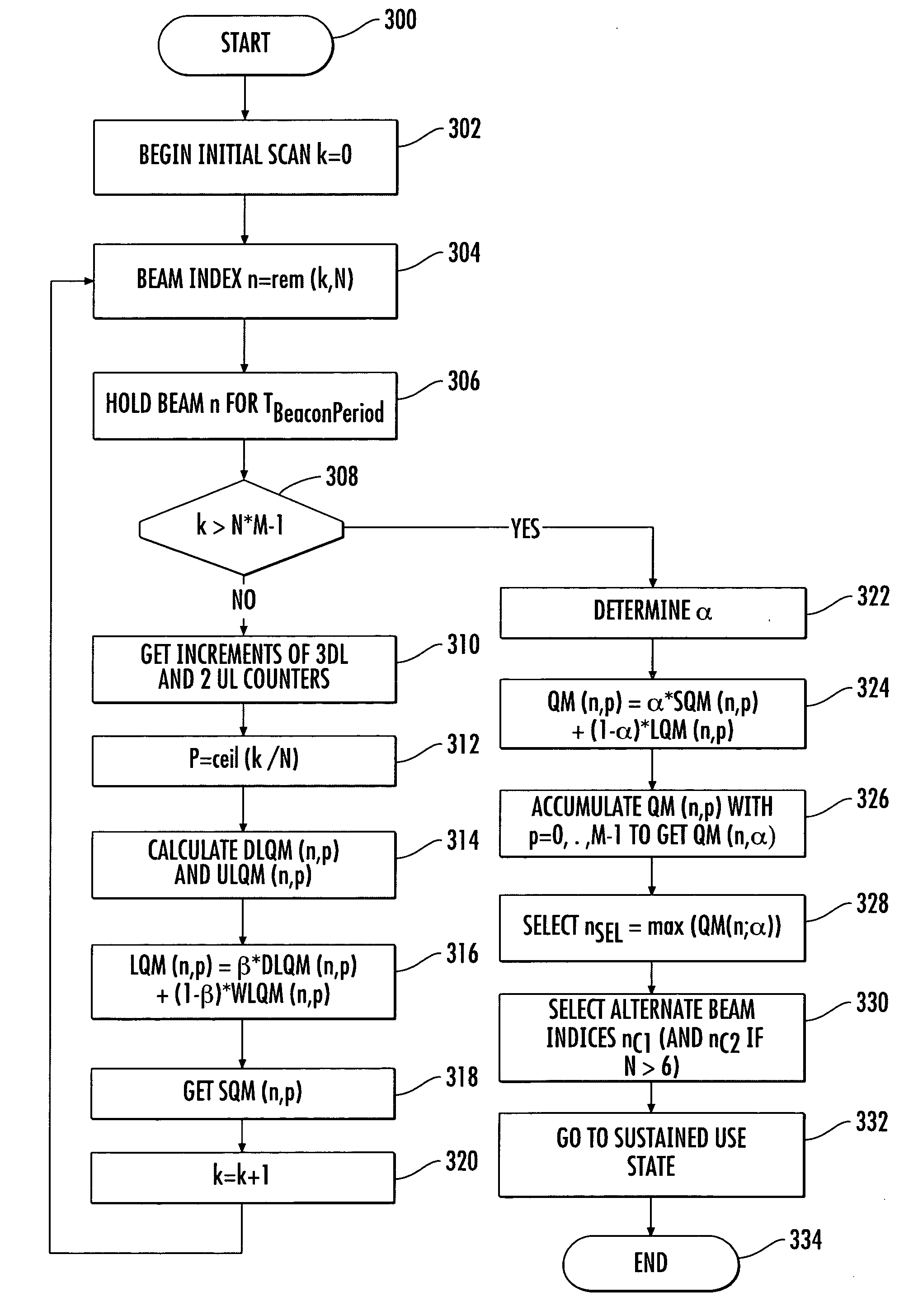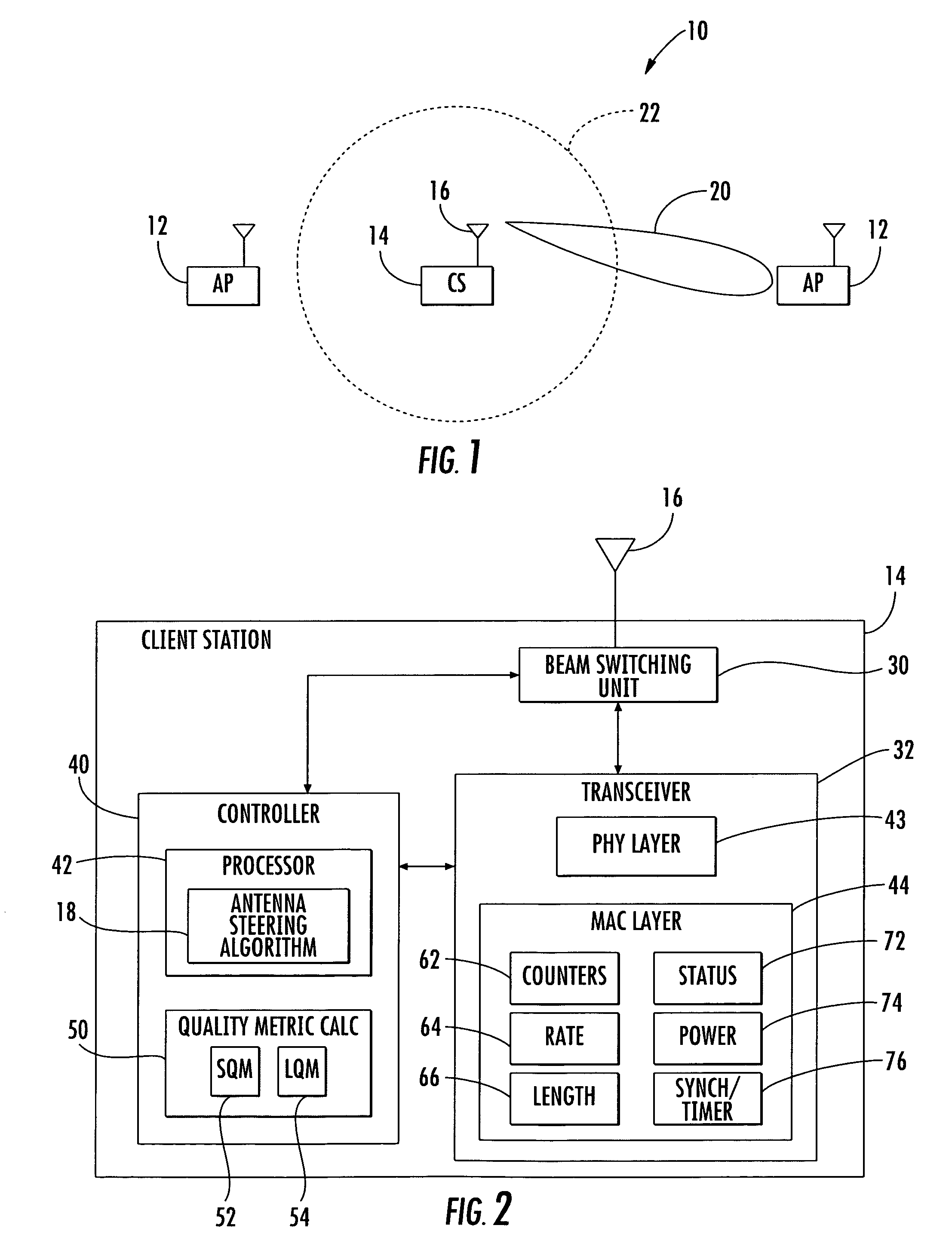Method for steering a smart antenna for a WLAN using a periodic re-scan
a smart antenna and periodic re-scan technology, applied in the field of smart antennas operating in wireless local area networks, can solve the problems of distorted received signals, difficult to accurately measure signal quality information, and inability to accurately steer antennas, etc., to achieve the effect of improving the antenna steering decision
- Summary
- Abstract
- Description
- Claims
- Application Information
AI Technical Summary
Benefits of technology
Problems solved by technology
Method used
Image
Examples
Embodiment Construction
[0024]The present invention will now be described more fully hereinafter with reference to the accompanying drawings, in which preferred embodiments of the invention are shown. This invention may, however, be embodied in many different forms and should not be construed as limited to the embodiments set forth herein. Rather, these embodiments are provided so that this disclosure will be thorough and complete, and will fully convey the scope of the invention to those skilled in the art. Like numbers refer to like elements throughout, and prime notation is used to indicate similar elements in alternative embodiments.
[0025]Referring initially to FIGS. 1 and 2, an 802.11 wireless local area network (WLAN)10 includes an access point 12, and a client station 14 operating with a subscriber based smart antenna 16 in accordance with the present invention. The smart antenna 16, which will also be referred to as a switched beam antenna, generates a plurality of antenna beams in response to an a...
PUM
 Login to View More
Login to View More Abstract
Description
Claims
Application Information
 Login to View More
Login to View More - R&D
- Intellectual Property
- Life Sciences
- Materials
- Tech Scout
- Unparalleled Data Quality
- Higher Quality Content
- 60% Fewer Hallucinations
Browse by: Latest US Patents, China's latest patents, Technical Efficacy Thesaurus, Application Domain, Technology Topic, Popular Technical Reports.
© 2025 PatSnap. All rights reserved.Legal|Privacy policy|Modern Slavery Act Transparency Statement|Sitemap|About US| Contact US: help@patsnap.com



